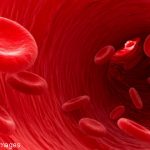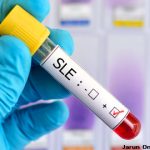A study recently published in Arthritis Care & Research (AC&R) reveals a novel approach for the study of preclinical rheumatoid arthritis (RA).1 The investigators conducting the study sought to determine if these RA-related biomarkers could also be found in healthy subjects in order to investigate relationships between genetic and environmental factors and the presence of these biomarkers. Their goal is to study how these biomarkers evolve.
Study author Kevin Deane, MD, assistant professor of medicine in the division of rheumatology at the University of Colorado in Denver, explains the rationale for the study. “With this study, we ultimately want to accomplish two things,” he says. “One is to understand the biology of RA development, including what environmental and genetic factors make you more likely to get rheumatoid arthritis. The second is to be able to build predictive models to determine who will develop future RA. Once we can predict who is likely to develop RA, we can take it a step further towards preventing rheumatoid arthritis.”
The subjects in this ongoing, multicenter, prospective cohort study do not have RA themselves, but are first-degree relatives of someone with RA, likely putting them at higher risk for RA. After following participants for up to five years, the researchers concluded that first-degree relatives of patients with RA demonstrate high prevalence of RA-related autoantibodies. “Finding these subjects with RA-related autoantibodies but no arthritis allows us a unique opportunity to investigate how RA-related autoimmunity develops over time,” says Dr. Deane. He says that clinicians now actively seek to prevent heart attacks, which at one time were not thought of as preventable, rather than simply managing the damage caused by them. “We would love to see a similar approach for RA, where risk factors for disease are identified and future disease is prevented,” he notes.
Dr. Deane is using the same patient cohort in a substudy investigating the hypothesis that the lung is the site of initial RA-related immune dysregulation. For this study, which is supported by an ACR REF Within Our Reach: Finding a Cure for Rheumatoid Arthritis grant, Dr. Deane and his fellow researchers are examining the lungs of autoantibody-positive, first-degree relatives with no arthritis to determine if there are characteristics in these individuals that suggest that RA-related autoimmunity is present in the lungs before the development of symptomatic joint disease.
“The next step is to continue to follow these first-degree relatives and see what happens over a longer period,” Dr. Deane continues. “We’ve followed many of these people for four or five years, but we’d love to follow them for 10 or more years. We really need this long-term follow up to understand what rheumatoid arthritis-related biomarkers mean and how they relate to biology and prediction of disease.”
To learn more about Dr. Deane’s Within Our Reach–funded study, visit www. rheumatol ogy.org/REF or www.WithinOurReach.info.



